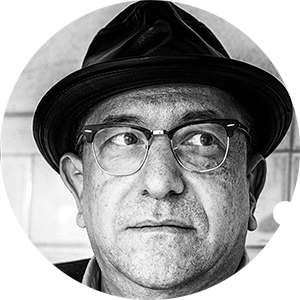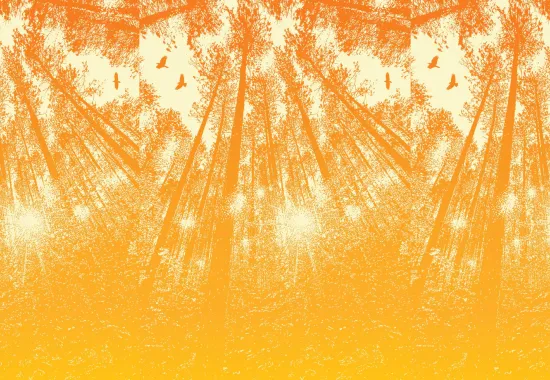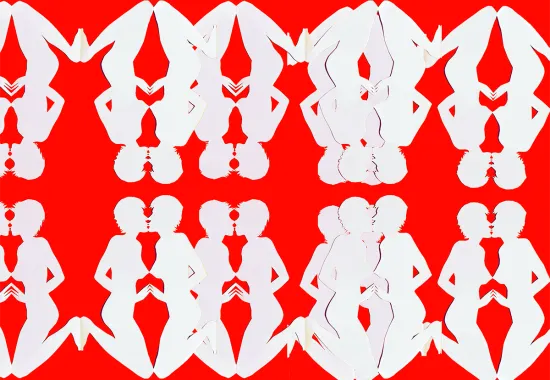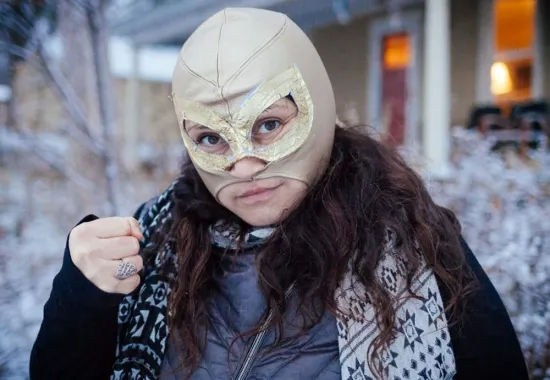Final Stanzas from 12 Winters Blog: Interview with Grant Tracey
I’d known of Grant Tracey and his writing for years, because of his editing of the North American Review, but I had never met Grant before this past June. A few weeks previous to our meeting, in late April, my wife Melissa and I were visiting Cedar Falls, Iowa, the home of the University of Northern Iowa, where Grant teaches; and I was sitting in on a creative writing class being taught by my friend and Twelve Winters Press author Jeremy (J.D.) Schraffenberger, when Jeremy mentioned that his colleague, Grant Tracey, had a short story collection that he was interested in publishing, but he was disenchanted with the process of looking for a small-press publisher. In fact, even though Grant had published three previous collections of fiction, he was considering self-publishing this new book.
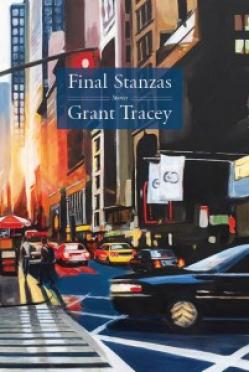
I realized immediately that a great opportunity for my press, Twelve Winters, had presented itself, out of the blue as it were. I told Jeremy that I was very much interested in looking at Grant’s collection, and he put us in touch via email. Grant graciously sent me a collection to read through, in a couple of installments, both published and unpublished stories (seventeen pieces all together, I believe). Then in June Melissa and I attended the North American Review Bicentennial Conference in Cedar Falls, and we arranged to meet Grant for coffee on our first morning there. By that time I’d read Grant’s terrific stories and very much wanted to bring out some sort of collection. So when we got together at Cup of Joe, it was just a matter of going over the contract details and possibilities for bringing out the book in print, digital and audio.
Grant decided on eleven stories for the collection, ten previously published and one new story. I asked the Press’s faithful and talented editors Pamm Collebrusco and Adam Nicholson to read the collection, which was still untitled. As luck would have it, the Press’s publishing schedule opened up for the fall, and we could bring out the collection quite quickly, especially in the world of publishing, where it may take years for an accepted book to see the light of day. By early August, Pamm and Adam had sent their editorial notes to Grant. We were getting close to having a finished manuscript, but the collection still didn’t have a title. Grant didn’t want to use one of the stories’ titles for the collection’s title, but rather he wanted some phrase or image in the stories to suggest the title. I thought the phrase “final stanzas” from the story “Turnstiles” would be perfect–and Grant also liked it.
•
On August 24, Final Stanzas was released.
It’s become a Press tradition that I interview the authors upon the release of their books, so I sent Grant some interview questions, and what follows are his unedited responses. I think you’ll enjoy the interview almost as much as the delightful collection itself.
What’s the time span of the writing of these eleven stories? In other words, how old is the oldest story, and how recent is the most recently written?
The oldest story in here is “Dead Flowers.” I wrote that in 2009 right around the time my last collection Lovers and Strangers was coming out with Pocol. It was a story inspired by my troubled relationship with my father and a lot of things that went down during my childhood. I thought I had moved past them, but writing the story proved to me that I hadn’t. Anyway, that’s the oldest. The newest in terms of publication date is “Ossining, 1918.” Aethlon printed that just last June. However, I had been shopping that story around for three to four years.
The newest in terms of composition is “Written on the Sky” (I wrote it about a year and a half ago and it appeared in Green Hills Literary Lantern) and “Still the Bomber,” which I revised yet again, just weeks before sending it to you. “Ossining” was an important story because it was the first one where I really felt like I was playing with time. I was free to move into the past and flash-forward into the future whenever I wanted because the narrative sensibilities were that of an artist, James Cagney. “Written” was a voice-driven piece. I’m not as comfortable in first-person—I like the control of limited third—but this was a very autobiographical story, and I felt the voice was real and honest.
It’s funny that you mentioned autobiography a couple of times. At least in one of your stories you refer to a real-life colleague at UNI (Dr. Julie Husband). I trust she’s all right with being a character in your fiction. Usually novelists and short-story writers cast at least a thin veil over themselves and friends and family. Why did you decide to dispense with the veil altogether in this case, and is this a technique you’ve used with some regularity in your fiction?
Two reasons why I dispensed with the veil: one, I respect and admire Dr. Husband so I wanted to give her a shout-out; and two, all that stuff about Philip Roth in the story I got from reading an article of hers on the writer, so I wanted to, in a sly way, acknowledge that. And yes, I asked her permission. She was amused. Anyway, many of the stories are artistic creations, imagined probabilities, not biographies, but two or three come pretty close to my life or people I know. The second story in the collection, “Seeing Red, Feeling Blue,” was inspired by the relationship between my sister and mother. The event never happened but some of the sensibilities in that story derive from the complex dynamics of their love for each other. In “Written on the Sky” the mother takes the son out of school to see Woody Allen movies. My mother did that. She somehow always knew when I was struggling and needed to get away from all the crap that goes on in junior high. But the rest of that story is a leap of the creative imagination. Yes, I had a neighbor who I had a crush on. And yes she liked to sun bathe, but we never hung out and discussed theatre. She did say I looked like Johnny Cash, however. Oh, and the scene with all the Playboy playmates fastened to the wall? That did happen. My father took me to a bachelor pad where I couldn’t tell you what the paint color a certain wall was. But all kidding aside, if there are any connections to real people in these stories, they are for the most part accidents or composites.
The actor James Cagney seems to be a hero, or at least a person of particular interest to you. You’ve published critical work on him and chose a quote from one of his movie roles for the book’s epigraph, as well as his being the main character in two of the stories (plus in a third, a character has named his dog Cagney). What about James Cagney do you find so fascinating or perhaps even inspiring?
I think he’s one of the most authentic actors of all time. Cagney had a simple approach to acting: plant your feet, look the other fella in the eye, and tell the truth. And that’s him. I also love his energy, the way he moves. He talks fast, has a territorial lean, raises an eyebrow with all-knowing awareness, and plays things big. So many actors, especially working today, go for the less-is-more, naturalism style of acting. Underplay, underplay, underplay—Steve McQueen style. That’s cool. But Cagney was like Orson Welles once said, “a thousand firecrackers going off all at once.” I also found the contradiction between his tough-guy persona and the quiet, shy person he was off screen fascinating. Cagney tired of playing the tough guy and wanted to branch out, but it was difficult. Audiences loved the tough-talking wise guy, but I’m attracted to the man who wanted more from his art. Earlier, I called him an artist and he was. He took the craft of acting seriously, read Nobel Prize-winning authors, danced, painted, and saw art as essential to living a better, richer life.
Besides the two included in Final Stanzas, are there other James Cagney stories that you’ve written? Are these stories fictionalized biographies, or wholly made up tales based on your perception of Cagney as a person?
I haven’t written any other Cagney stories, not yet, but I plan to. The two stories here are tales based on my perception of Cagney as a person. Tony Kushner, when I met him at [University of Northern Iowa], said about Abraham Lincoln (whom he’d just written a screenplay about) or Jackie Gleason (whom I was writing some stories about) that it’s okay to take imaginative leaps from the historical record as long as you don’t alter the personality or reality of the person. Stay true to the character. I like that way of thinking about it.
Both of the Cagney stories featured in Final Stanzas were grounded in some reality. Cagney was a catcher on a local baseball team that did travel and played at Sing-Sing. I took that reality and blended it with an event that happed to me. In the late 1970s, my parents ran a group home, and the social worker overseeing things arranged a softball game at a local prison. Our team consisted of a bunch of group home parents and their kids, and I played catcher against a prison team. My dad was on the field that day with us and during the game kept looking up at the turrets and guards and machine guns and shook his head, mumbling, “I hope we get out of here. Alive that is.” He was joking and not joking at the same time. I think he was feeling mighty claustrophobic.
Anyway, I took two realities and blended them into fiction. Cagney’s father in that story is, in a way, modeled on my father. Both were alcoholics, both loved their sons deeply. For “Faraway Girl” I wanted to write a kind of weird love story that was also a detective yarn of sorts. In 1932, to protest the roles Warners was giving him, Cagney walked off the studio lot and went back home to New York. What follows is my imagined probabilities of what he might have done during his “vacation.” The story and the characterization of Melissa Coors is also inspired by Shirley MacLaine’s dynamic performance in Some Came Running and F. Scott Fitzgerald’s The Great Gatsby (the list stuff that Missy is told to follow versus Jimmy Gatz’s lists and desires to re-imagine himself).
When we first started talking about the Press bringing out this collection, I believe the manuscript you shared with me consisted of twelve previously published stories; then a day or two later you emailed me five newer, unpublished stories to consider as well. Ultimately you decided on ten published stories, plus “Still the Bomber.” Can you describe your thought process as to how you arrived at Final Stanzas in its final form?
Yes. There are six previously published stories that aren’t in the collection, including one, “Bright Lights,” that I’m quite proud of, but I didn’t think it fit in with the arc of what Final Stanzas became. I realized as I was putting the order of the stories together that much of this collection is, not to sound too theoretical, about the interface of life and art, how one informs the other. It’s a circle, a perpetual feedback system: we get meaning from and impose meaning on art. And all of the stories are, in some way, about seeking out an authentic existence: whether it’s a college student trying to create a student film and live life his way (“The Hermit Finds Solace”) or an actor fighting for better scripts and trying to rectify things with his teenage daughter (“Still the Bomber”). For all of the characters in these stories living in a world of art matters because it’s what sustains us.
You teach film studies in addition to creative writing at UNI. How has your love of and critical analysis of film informed your story writing? What cinema-informed lessons have you brought to your teaching of creative writing?
My experience in community theatre has improved my writing. I’ve acted in over twenty plays, most recently taking on the role of Peter in Edward Albee’s Zoo Story. What I love about acting is making the hot choice, the risky choice, and that’s what I try to do in my writing, flip the moment, find a contrary impulse, and never let the characters on the page be defined around one truth. Humans are way too complex for that. Secondly, from acting I get the central question to all art: “Where’s the love?” Stories to me are about love, how we respond to and live with or without it. Right now I’m working on a craft essay entitled, “On Method Writing,” in which I look at how to write more meaningful dialogue in fiction. Writer Ron Carlson has argued that in dialogue characters speak from their own space, freed up from the controlling voice and narrative point-of-view of the writer. Yes! But how do we create real meaning within that space?
Looking at the films of John Cassavetes, the writing of Julie Orringer and Clifford Odets, I explore how well-written dialogue creates trigger words, key bits, that characters respond to. This leads to beat changes, shifts in a scene, escalating or ameliorating the tension. As an actor, when I learn lines, I don’t necessarily focus on the last few words or “cue” of the other actor’s utterance. Instead, I ask what’s the intent behind his or her words that force a response from me. What do I want? What’s emerging here? I circle the word the other actor speaks that elicits a response or new tactic from me. That word is my trigger. For example: character A says, “You never do the dishes. I came home and this place was a mess.” Character B, me: “I didn’t know you wanted me to do the dishes.” Character A: “What do you think I wanted? I can’t write when the place looks like this.” Anyway, the trigger words here: “dishes,” “wanted” and “write.” This is a simple example, but Sidney Lumet said that acting is a verb, and I think each time we write a line of dialogue we should asks what verb best describes this utterance. Am I shaming, chastising, praising, cajoling the other person? If we look at the small sample of dialogue above us, Character A first scolds. Character B attempts to placate. Character A responds to that choice with greater anger, shaming.
If your dialogue in a scene isn’t working, change a verb, an intention. Choose a different one and re-write the line of dialogue accordingly.
You turned the story “According to Chelsea” into a stage play, which you directed in what you called a “guerilla theater” production in 2014. Talk about that experience, including the process of transforming a short story into a dramatic script.
It was amazing. There’s nothing like hearing words you wrote performed by an actor, because that actor infuses the words with life and makes them his or her own. It’s a truly collaborative experience and suddenly you realize that the art really is bigger than you. As a writer you surrender what you wrote over to the actors and engage with the choices they make and what they bring to the project. Of course to write the play I had to really expand upon a rather short short story, writing extensive dialogue scenes and developing a subplot involving Wally Bober’s brother Manny and their Zeyda. In Paddy Chayefsky’s teleplays there are always two main plot lines. Take a look at Marty. There’s the love plot: Marty and Clara. And then there’s the subplot: the in-laws needing their own space, struggling with Marty’s aunt, and asking Marty and his mother to take her in. From this subplot, emerges the desire of Marty’s mother to discourage her son’s love for Clara. I often like to have two narrative strands, like Chayefsky, going on in my stories, but for the play I really developed those two plot lines.
If a century from now the world only knows Grant Tracey, short-story writer by one story from this collection, which story would you want it to be, and why that one?
That’s a tough one. I’m fond of “Ossining, 1918” because, like I said earlier, it was a real breakthrough in terms of the art of time in fiction. I also love “Still the Bomber” because I struggled with that story for five years and found a way to tell a story with a lot of half-scenes: nine or so. “Written on the Sky” was nominated for a Pushcart Prize so I guess I should pick that one, but I’m not going to. I do like the ease with which I slipped into a first-person voice there, but my favorite of all in the collection would be the lead story and the one the book’s title comes from, “Turnstiles.” The story is personal, in the sense that it’s set in a part of Toronto my mother grew up in (and she was raised above a mom and pop Variety store). I am of Macedonian-Roma origins, and those are my grandparents in that story. “Turnstiles” also comes closest to Bernard Malamud in terms of its narrative telling voice (and Malamud is my favorite short-story writer, and I’ve always wanted to write a Malamud–type story. I was thinking of the Assistant and an early story by John Cheever the whole time I was composing this). “Turnstiles” wrote itself quickly. It was one of those rare gifts for a writer where it was just there. Yes, I revised for language but the narrative arc emerged fully upon the first draft. It has hockey in it (my favorite sport) and ends with an image that is original and kind of cool. I just really, really like it. I realize this is a personal response, but hey, that’s how I roll. It’s the one I want to be remembered by.
You’ve acted in several community-theater productions, and in fact this past summer you were on the stage again. Therefore, you were keenly interested when I talked about the potential of creating an audiobook edition of Final Stanzas for the Press. What do you have in mind for the audiobook?
I think I’d like to have members of the local theatre community read some of the stories. I’d read 3–4 of them and surrender the bulk of the project to other voices, getting actor pals to read. The variety of voices I think might enhance the work and make the audio experience a rich one for our listeners. I’ve already got the green light from five community actors. They’re ready.
It was in essence dumb luck that the Press got the opportunity to bring out this terrific book. Our mutual friend Jeremy (J.D.) Schraffenberger mentioned to me offhandedly that you had a collection you’d like to publish, but you were considering doing it as a self-published project because you didn’t want to go through the hassle of finding a publisher for it. Is that more or less where you were with this book when my ears perked up, and I asked Jeremy to put us in touch? If so, why did the process of finding a publisher seem so unappealing to you? Or, if not unappealing, how would you describe your feelings of looking for a publisher?
Honestly, I was burned out. At AWP, one of the panels I went to said if you want to find an agent or a small-press publisher you must have a web presence. Well, I don’t Facebook, tweet tweet, or blog. I have no web presence. I’d rather be writing fiction than documenting my life for others to read. Platform was the word they kept saying, platform. Well, I do have a platform, I’m Fiction Editor at the North American Review, but I don’t have a presence or platform online. So I was discouraged. I wasn’t willing to change. I’m not comfortable talking about myself. My work, yes. I tried entering contests, was a finalist at Snake Nation, but that was about it. I wasn’t getting a nibble. So I was thinking I’ll just self-publish. I’m a full professor. It’s not like I’m fighting for a promotion. And most of the stories had already been accepted in small magazines. But I’m glad I waited and Jeremy put us on touch. I was extremely happy that when I met you and we drank coffee together, you said I didn’t have to have a big web presence. You allowed me to be myself and I appreciate that. What I wanted more than anything was to work with an editor in producing a product that enhances the stories. I’m an old-fashioned, retro writer. I admire stories that have a strong narrative arc, explore the human heart and questions of love, and seek out authenticity. And working with Twelve Winters and you has really brought the stories to life. I’m proud of the look and feel to Final Stanzas and all that you’ve done to make it such a rewarding experience. The cover art; the inside font; the headers: wow. And I’ve never had my work copyedited the way Adam and Pamm did. It was awesome and a little embarrassing. I couldn’t believe all the errors they caught and I’m grateful that they did. A big shout-out to them!!
Finally, tell us about your current writing project, which you describe as a crime novel set in 1965 Toronto?
I’m a big fan of detective stories. But as you probably guessed I like 1950s and 60s crime noir, stuff that’s edgy and doesn’t rely on CSI to solve its murders. But as much I love the genre I’m troubled by all the misogyny that abounds. So I wanted to write something that was a nod to the retro crime noir antecedents, without necessarily subscribing to the darker elements of sexism. Moreover, I wanted to find a voice that was unique: literary but also hard-boiled. What I admire most about Raymond Chandler, Mickey Spillane, and Richard Stark is that you can tell their prose style apart from all the rest. Chandler is a romantic coated with loneliness. Similes abound. Spillane, especially in the early years, revs up the anger, aggression, and male hysteria. And Stark. He’s bare and spare, full of a professional’s restraint, but every now and then he gives you a mouthful of glass.
The plot to my novel: Former Toronto Maple Leafs left-winger and now private-eye, Hayden Fuller, didn’t expect to be back in Maple Leaf Gardens, let alone mixing it up with a consortium of corrupt NHL owners and ruthless gangsters in the burgeoning permissive society of Toronto, 1965. When Cathy Stabulas goes missing, Hayden’s on the case, confronting his past while moving forward in a much different game, one involving murder. Cheap Amusements is a 65,000-word crime novel with a skate in the world of hockey (sports figures are conspicuously absent from two-fisted tales) and another in the violent undertow of the American hardboiled. The narrative is full of double crosses, liars and lies, and deadly deceptions (double twists abound). Hayden, like a pinball cushioning off bumpers, bounces from one encounter to another. Sure he’s a smart-ass, but he’s caught up in a whirl of irrational chaos and hopes—like that thudding pinball—to stay in the game. Oh, and his name? A composite of two of my favorite noir icons: actor Sterling Hayden and director Samuel Fuller.
Recommended
An Interview with Ren Cedar Fuller
“Tracing the shape of real bodies”: An Interview with Frances Cannon
Becoming Visible



